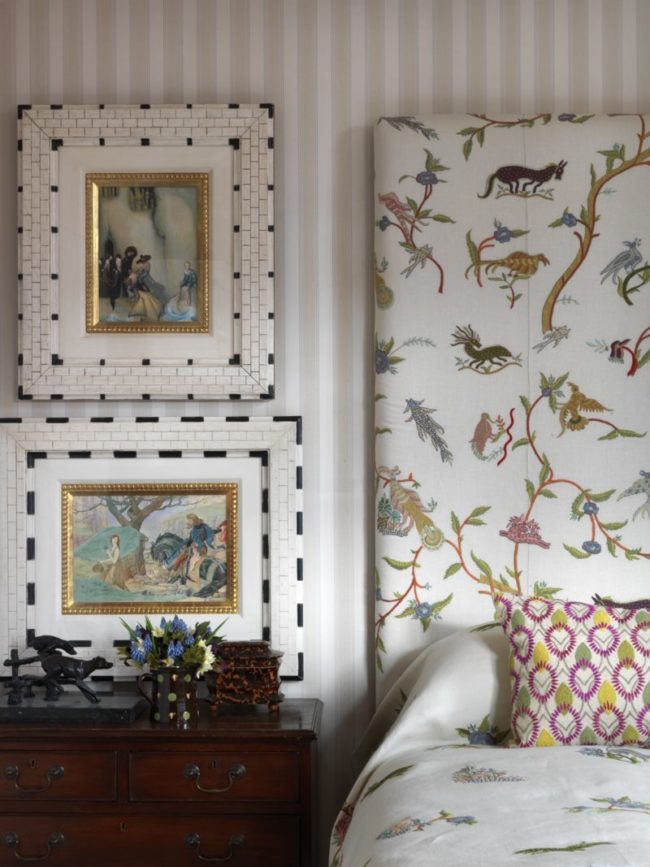You’re probably not going to be hanging out with friends. Why not do a little work on your home? With so much time spent at home, many of us are paying more attention to our surroundings — and discovering that we don’t like what we see.
Now might not be the time for a gut renovation, given the social distancing measures still in place and shifting rules regarding construction in different areas and apartment buildings. But it’s a good time to think about smaller home improvement projects.
With weekends largely devoid of social plans, what else have you got to do?
If you’re willing to tackle the work yourself, there are changes you can make that won’t cost much but will have a big effect on the appearance and comfort of your home. A few designers recently shared some of their favourite budget-friendly D.I.Y. projects. Read more, ‘We Can’t Go Back To Normal- How Coronavirus Will Change Home Design.’

Painting is one of the least expensive ways to make a big change. But it’s a huge undertaking that can take weeks. For immediate gratification, paint a small space — say, a bathroom. Image via Architectural Digest.
Paint A Room
Painting has long been touted as one of the least expensive ways to make a big aesthetic change. It’s a surefire, and relatively easy, way to change the feel of a space. But there’s a caveat that’s often left out: Painting all the rooms in a home, from ceilings to baseboards, is a massive undertaking that can require weeks of neck-craning effort. For more immediate gratification, take a targeted approach to introducing a new paint colour and paint a room instead.
Start with a small room — an entryway, bathroom or compact bedroom — and use samples to test a few shades. Generally speaking, warmer, darker tones will make a space feel more intimate while lighter, cooler colours will make a room look more expansive — and if you aren’t up for applying more than one coat, don’t change the colour too drastically. If you are game for something a little more involved, painting the ceiling the same colour as the walls can be a striking update and make old-fashioned shades feel more modern.
Read more, ‘The 20 Best Paint Colours According to Dulux.’
Paint a small space say, a bathroom, a brighter or bolder colour that makes you happy.
Or apply a favourite colour to all the interior doors, to change them from background elements to decorative features. We all think about the colour of our walls, but we don’t think enough about the doors. Read more, ‘Paint Mistakes: The 9 Colour You Should Never Make.’
Choose paint with an uncommon finish. In Melissa’s city apartment, most of the walls are off-white or a straw-hued grasscloth, but the entry is painted a deep coca-cola shade in a matte chalk finish. The lime wash basically gives the look and feel of a plastered wall, but anybody can do it. Talk about changing the space — it made this simple, rather dreary entry foyer into a very dramatic, special area of the property.
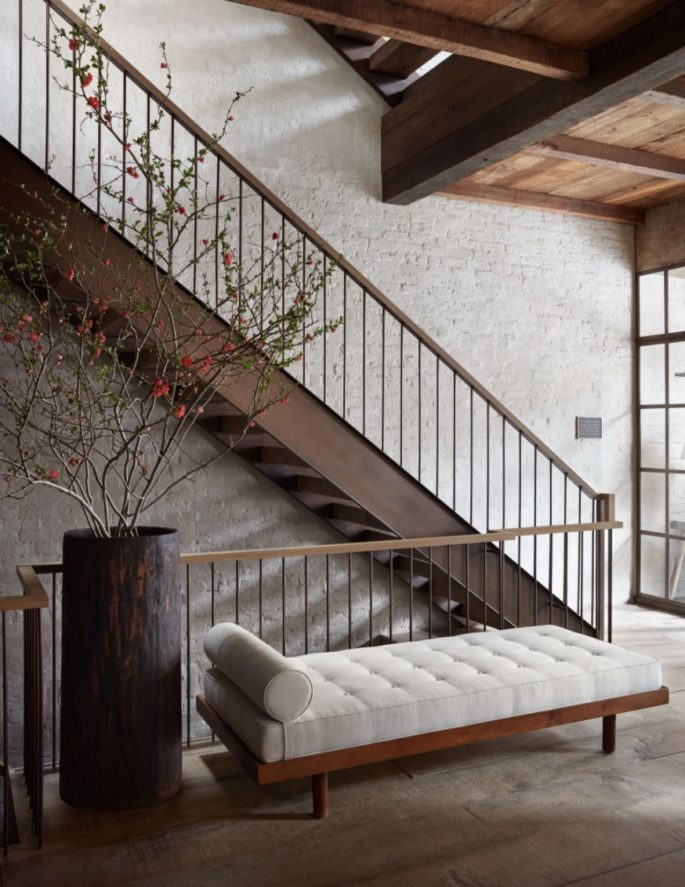
Choose paint with an uncommon finish such as a matte chalk-y lime wash finish which basically gives the look and feel of a plastered wall, but anybody can do it. Image via Architectural Digest.
Add Wall Panelling
We’ve been talking about the appeal of shiplap and other kinds of wall panelling for years. Panelling, and moulding is relatively easy to install, and a little can go a long way. You use it to add instant depth, drama and warmth to a room. You can add mouldings around a doorway. Or use white-painted vertical boards in guest-room or bedroom niches to create eye-catching storage areas. Or Shaker-style cabinet doors to create interest.
The best installation method depends on the look you’re going for and what’s behind the wall. In most cases, it involves identifying where the studs are, cutting the boards to size and securing them with a nail gun. If you need help, There are so many YouTube tutorials.
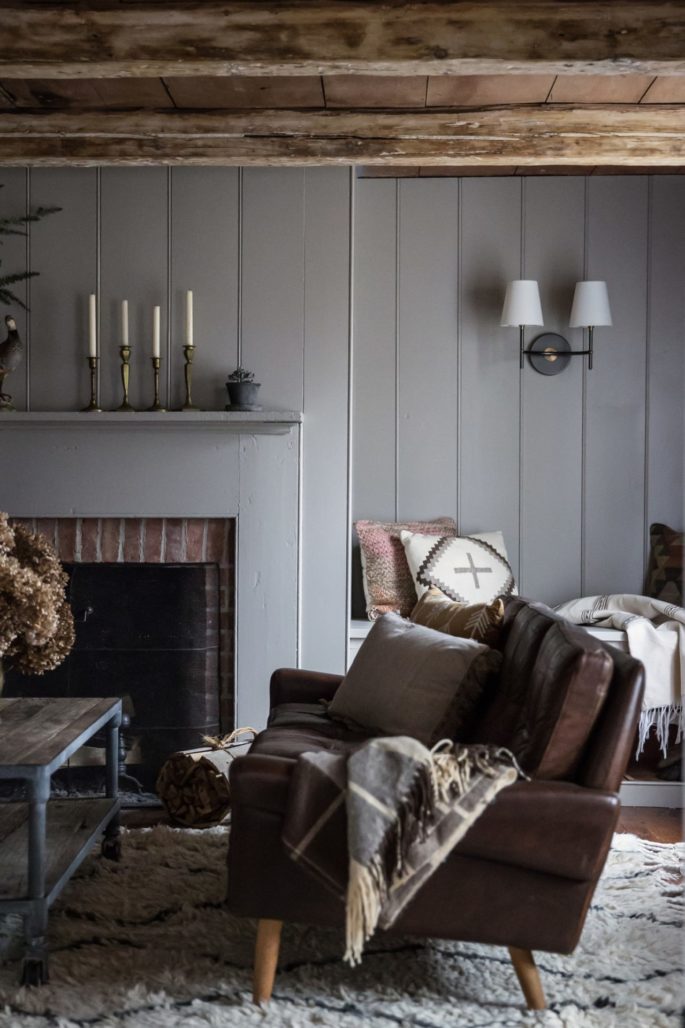
Panelling, and moulding is relatively easy to install, and a little can go a long way. You use it to add instant depth, drama and warmth to a room. Image via Remodelista.com
Upgrade Your Lighting
Lighting is an easy fix — and one that can significantly change the feeling of a room. So many people are in houses where they’re just living with the same lighting that the builders put in: it’s usually a flush-mount light with one bulb that’s too bright. Make sure you have different kinds of lights in a room — some ambient (lamps with shades that create a diffused effect) and some task (those that brighten a specific spot for reading). As well as replacing flush-mount fixtures with more flattering pendants or chandeliers, try adding fixtures closer to eye level which are the most flattering illumination of all, plus some lamps and sconces, which are also a really great way to bring character and layers to a space. If you use plug-in sconces, installation is easy. Just mount them on the wall near outlets. Sconces are particularly useful beside beds or sofas and above counters or desks.
The most important thing to remember about lighting is that many sources of low light are always preferable to a smaller number of very bright sources. It is not unusual to have around seven different lights in a living room, none higher than 25 watts. And remember, dimmers are your friends; you can buy a plug-in dimmer for any lamp that isn’t hard-wired, which will allow you to create a warm, diffused glow in a room and still have the option of brighter light for reading or cleaning. Overhead lights should be dimmed way down to avoid a harsh glare, and if you’d like to turn a plant or something sculptural into a focal point, try lighting it from below.
Read more, ‘Let There Be Light, But Make Sure It’s Good Light.’
Compared to a single, bright ceiling light, having multiple lower-wattage fixtures creates a mood.
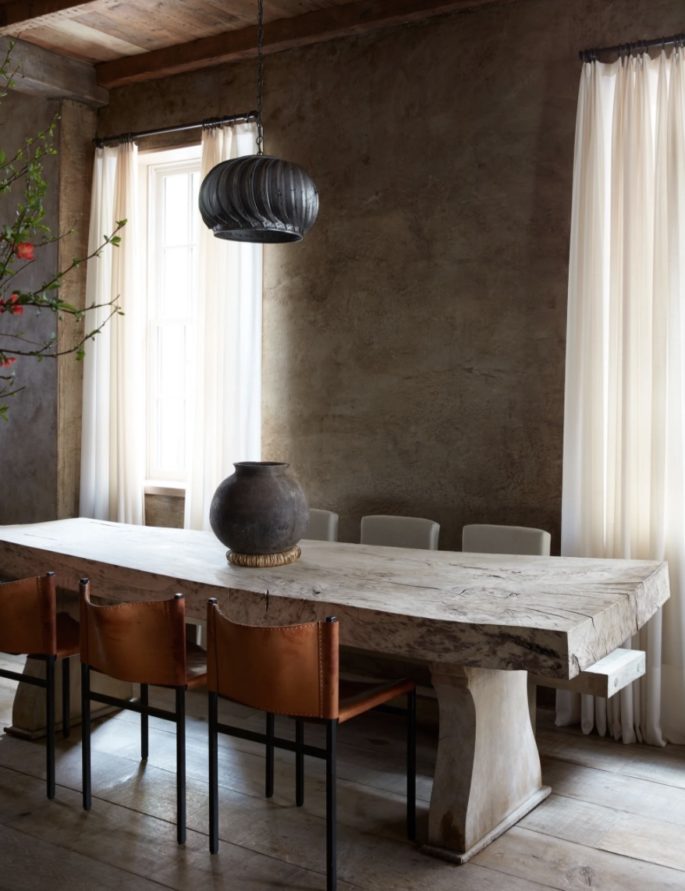
Lighting is an easy fix — and one that can significantly change the feeling of a room. Try replacing flush-mount fixtures with more flattering pendants or chandeliers, such as the one pictured in this American residence featured in Architectural Digest.
Peel and Stick a Pattern
Wallpapering is another job that might sound easy but can quickly become problematic when the paste spills and the paper bubbles and sags. One option for a simpler installation is peel-and-stick wallpaper, which is effectively a giant sticker for your wall.
It’s a really easy way to make a dramatic change in a room. Another advantage: Removal is almost as easy as installation. If it’s put on right, it can last a long time. But if you change your mind, or you’re renting, you can take it off before you move, usually without damage. And if you want to cover ugly flooring in a bathroom, mudroom or kitchen, there are peel-and-stick vinyl floor tiles — an old product that companies have improved with new patterns and colours. During the pandemic, these products have surged in popularity, said Ryan Breau, the web marketing manager at WallPops, a company that sells peel-and-stick wallpaper, floor tiles and backsplash treatments. Closer to home, there’s Scandinavium…
“Year over year, in April and May, we saw a 350 percent increase” in sales, Mr. Breau said. “People were at home without much to do. With just a utility knife and a measuring tape, they could do something really impactful to their environment.”

One option for a simpler installation than wallpaper is peel-and-stick wallpaper, which is effectively a giant sticker for your wall. Try Rebel Walls, new Chinoiserie, pictured.
Overhaul Your Bedhead
The bed is usually the focal point of the master bedroom, and the bedhead is typically its most distinctive element. If you have an upholstered headboard that you don’t love, reupholstering it is an easy D.I.Y. project. You just need a staple gun. You’re stretching the fabric taut and staple-gunning it to the back. It’s just like stretching a canvas. Unlike reupholstering a sofa, re-covering a bedhead requires a minimal amount of fabric. Read more, ‘How Posh Is Your Bedroom.’ If you don’t have a bedhead you can make your own, out of plywood covered with carpet padding and faux leather. It doesn’t even need to attach to the bed frame. **Lead image Firmdale Hotels Bedroom in London by Kit Kemp.
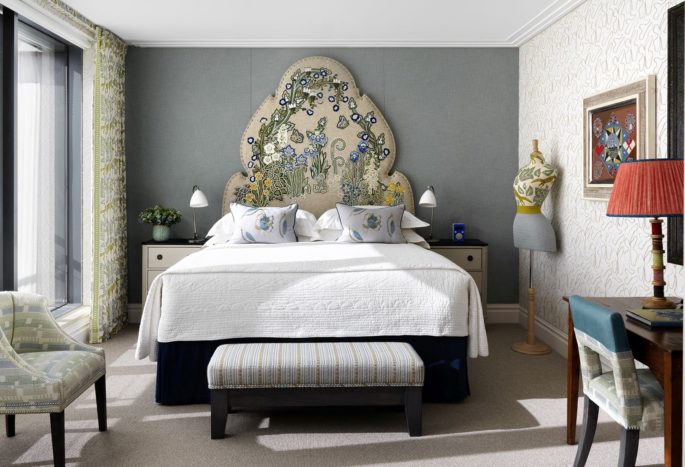
Firmdale Hotels designed by Kit Kemp, kitkemp.com

